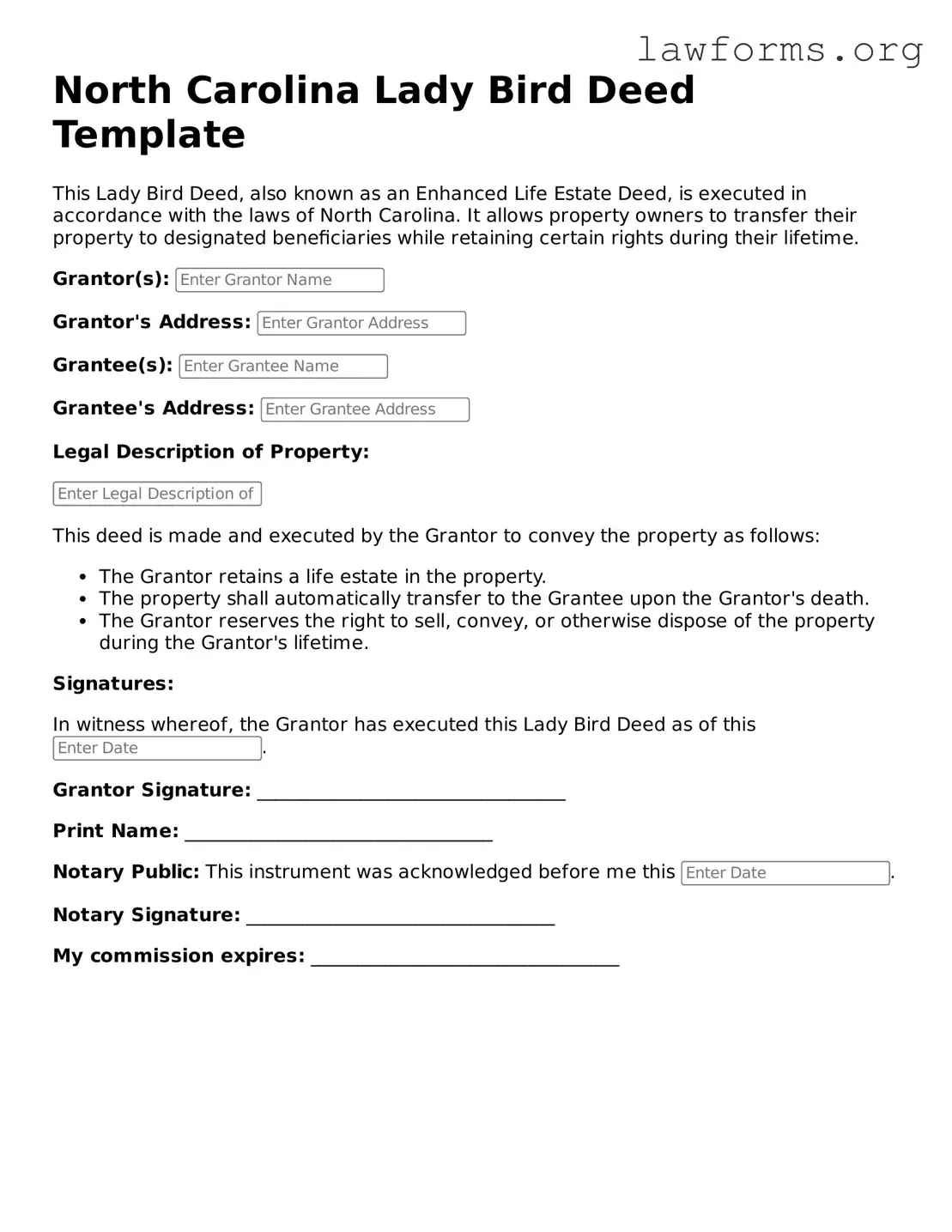Attorney-Approved Lady Bird Deed Template for the State of North Carolina
The North Carolina Lady Bird Deed form is a legal document that allows property owners to transfer their real estate to their beneficiaries while retaining the right to live on and control the property during their lifetime. This type of deed can help avoid probate and simplify the transfer of property upon the owner's passing. For those interested in this option, filling out the form is an important step; click the button below to get started.
Customize Document Online
